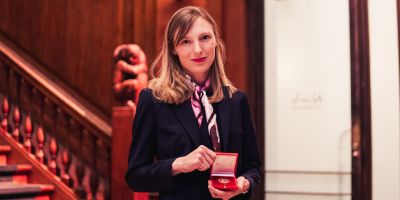Starting a podcast - Top tips

Alumnus Guy Kilty (Economic Studies 1997) founder of Dap Dip Podcast Production, shares some of the simple steps to setting up a podcast.
Starting a podcast has never been easier. Technology allows anyone to record high-quality audio face-to-face or remotely relatively inexpensively and once you’re set up with a hosting platform it’s free to distribute it to all the major podcast platforms. Having said that, starting a podcast that goes on to enjoy longevity and grow as it builds an audience takes a good deal of thought and preparation. With that in mind, here are my top four tips for starting a podcast.
CONCEPT
The importance of deciding what your podcast is about, why you’re making it and, most importantly, who you’re making it for, cannot be overstated. Once you have your target audience in mind, every other decision – the name, logo, style, tone and episode length and publication schedule – flows from there. Work out how you can build a podcast for your audience, not how to build an audience for your podcast, and do it way before you get anywhere near a microphone.
RECORDING
You’ve essentially got two options: face-to-face or remote. Pre-COVID, recording face-to-face was often the preferred option but, as you can imagine, that’s changed significantly. The good news is that recording high-quality audio remotely is easier than ever – all you need in terms of hardware is a computer, headphones and a USB microphone (like the Rode NT-USB), and in terms of software, there are tons of great solutions that work through a web browser. The key thing is to pick one that records each track separately, such as Zencastr, rather than something like Zoom which records the whole call, glitches and all. Recording face-to-face, you can hire a studio, or for a couple of hundred pounds, you can get hold of a recording device (like the Zoom H6) and one or two microphones.
EDITING
Editing audio can be painstaking but can also be great fun and there are loads of intuitive pieces of software out there that you can use to edit, mix and master your episodes. Audacity is a great example, and it’s absolutely free to download. One thing to always bear in mind at the editing stage is that if you want to use any music, you have to make sure you’ve got permission from whoever owns the publishing rights to that piece of music, so using a well-known song as your podcast theme could quickly land you in hot water.
PUBLISHING
Once you've recorded your podcast episodes, you’ll need to host them somewhere. There are loads of options available such as Transistor, Podbean and Castos, that allow you to store, label and schedule hours-worth of episodes and access download stats for a small monthly fee. Then it’s a case of pushing it out to the likes of Apple Podcasts and Spotify by telling them where to find it using its RSS feed.




